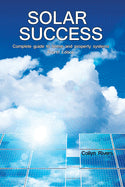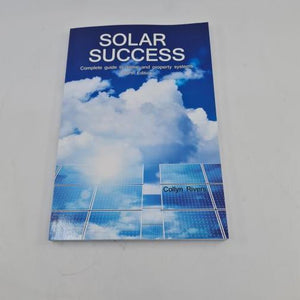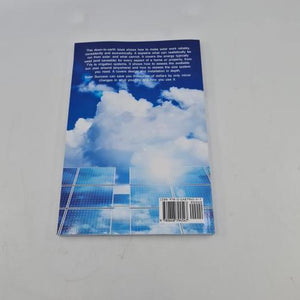Your Cart is Empty
Over 4500 items in stock - Ready to Ship to You
Over 4500 items in stock - Ready to Ship to You




0648794547
This down-to-earth book shows how to make solar work reliably, consistently and economically. It explains what can realistically be run from solar: and what cannot. It covers the energy typically used (and saveable) for every aspect of a home or property (of any size). It shows how to assess the available sun year around (anywhere) and how to assess the size system you need. It covers design and installation in depth.
Peter Poat The West Australian
Whether you want to simply understand the pros and cons of going solar . . . this book will answer more questions than any other. Highly recommended.Alan Gray Editor, Earth Garden magazine
A pragmatic no-nonsense approach to solar energy written by acclaimed Australian author Collyn Rivers, who walks the walk by showing his self-installed solar system on his 100% solar powered 10-acre property in the Kimberley.Jaycar Electronics
Preface: Terminology
Chapter 1: Solar Reality - an overview
Chapter 2: Lighting
Chapter 3: Fridges and freezers
Chapter 4: Air conditioning
Chapter 5: Washing machines
Chapter 6: Clothes dryers
Chapter 7: Dishwashers
Chapter 8: Power tools
Chapter 9: Phantom loads
Chapter 10: TVs and computers
Chapter 11: Water
Chapter 12: Swimming pools
Chapter 13: Ponds
Chapter 14: Solar
Chapter 15: Solar modules - voltage and current
Chapter 16: Solar regulation
Chapter 17: Batteries
Chapter 18: Battery charging
Chapter 19: Energy monitoring
Chapter 20: Generators
Chapter 21: Alternative power - wind and hydro
Chapter 22: Alternative energy storage - fuel cells
Chapter 23: Inverters
Chapter 24: Energy auditing
Chapter 25: Scaling stand-alone systems
Chapter 26: Meters and measuring
Chapter 27: Installing - legal
Chapter 28: Installing the system
Chapter 29: Constructing a Stand-alone System
Chapter 30: Grid-connect
Chapter 31: Example systems
Chapter 32: Living with solar
Chapter 33: Our solar systems
Chapter 34: Technical Terms Explained
Essentially, Solar Success is about using solar energy to reduce the fossil generated electricity that we use: to reduce one's carbon footprint. Throughout, it stresses the need to reduce what one uses unnecessarily before one thinks about generating more. This can be done by three associated and economically viable approaches:
- reduce energy usage by doing things differently
- reduce energy usage by using more energy-efficient appliances
- change the supply of energy to non-fossil fuel through appropriate technology.
The solar energy required is there; 7000 times more energy than the world currently uses is available. It makes every sense to use it and countries worldwide increasingly do.
Solar is also affordable. In California, Italy and Japan, solar power now challenges power generated through natural gas and nuclear energy. In Germany, home owners' solar generated surplus fed back into the grid network and all energy generated is paid at close to five times grid electricity's buying cost.
Australia's solar take up is high in rural areas that lack grid-connection. Sales of systems that draw from and feed back to the electricity grid (i.e. grid-connect) proved even more successful than expected as installation rebates and feed-in tariffs were initially very generous.In mid 2014 the Australian Federal government virtually ceased paying rebates on the curious basis that the scheme was attracting many more takers than had been expected. There is now however a growing move to go off-grid as electricity prices continue to rise (and feedback payment drop).
Knowing what is practicable and what is less practicable with solar enables readers to evaluate what is offered. And to have an often necessary and educated say in the decisions. For those who wish to design and implement systems themselves, Solar Success shows how to do it, and how to avoid the traps.
However you finance the system, and no matter where or how you live, follow the guidelines in Solar Success and you will have an economic system that will supply clean and reliable power for years to come.
Collections: D Collection, Publications and Books
Type: Publications and Books
Category: Publications and Books, Std Shipping